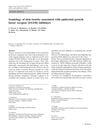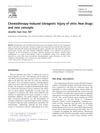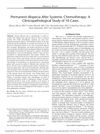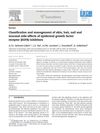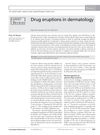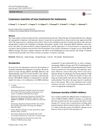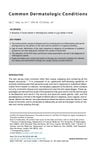Chemotherapy and Cutaneous Drug Reactions
January 2015
in “
Springer eBooks
”
alopecia xerosis papulo-pustular rash topical steroids antibiotics antiviral drugs moisturizing creams topical minoxidil tetrapeptide scalp cooling nail damage trichomegaly hand-foot syndrome EMPACT syndrome mucositis cryotherapy benzydamine HCl systemic analgesics antifungal prophylaxis antiviral prophylaxis hair loss dry skin rash steroids antivirals moisturizers Rogaine cooling cap long eyelashes HFS EMPACT mouth sores cold therapy benzydamine painkillers antifungals
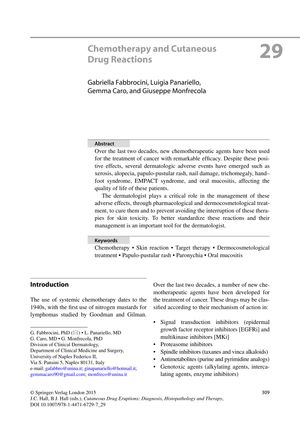
TLDR Chemotherapy can cause skin side effects that affect patients' lives, but they can be managed to avoid interrupting cancer treatment.
The 2015 document outlines the dermatologic side effects of chemotherapy, such as xerosis, alopecia, papulo-pustular rash, and other skin reactions, which can greatly affect cancer patients' quality of life. It stresses the role of dermatologists in managing these effects to avoid disrupting cancer treatments. Treatments include topical steroids, antibiotics, antiviral drugs, and moisturizing creams for xerosis; topical minoxidil and a tetrapeptide for alopecia; and systemic antibiotics for papulo-pustular rash. Scalp cooling is mentioned as a preventive measure for alopecia. The document also covers other skin complications like nail damage, trichomegaly, hand-foot syndrome (HFS), and EMPACT syndrome, providing various treatment recommendations. It notes that while new cancer medications are being developed with fewer side effects, many still cause significant skin issues. Management of mucositis, a common complication, includes maintaining oral hygiene and using cryotherapy or benzydamine HCl. Pain control may require systemic analgesics, and antifungal and antiviral prophylaxis are recommended for oral infections. The document concludes that the spectrum of cutaneous reactions has evolved with the changing landscape of cancer treatments.

